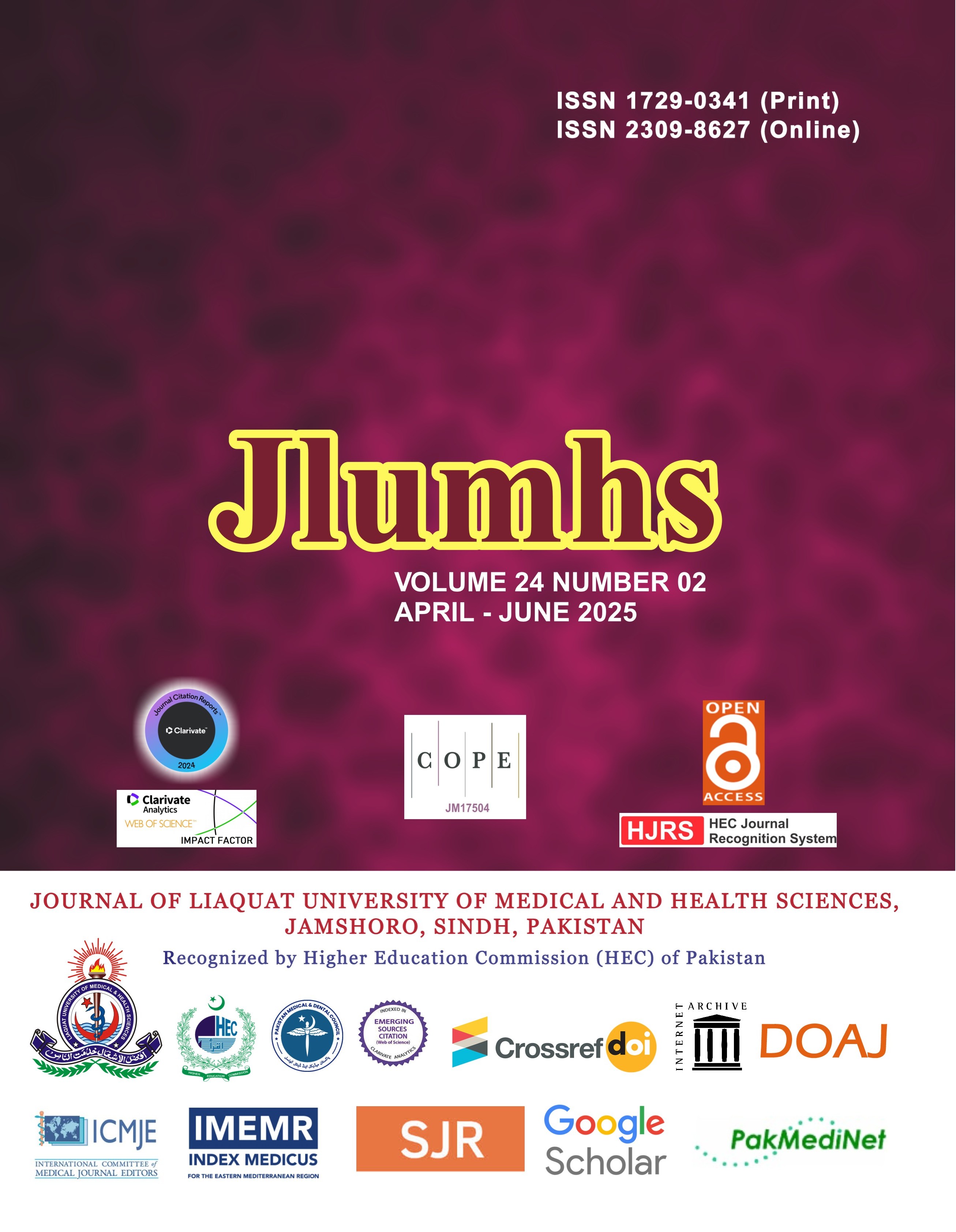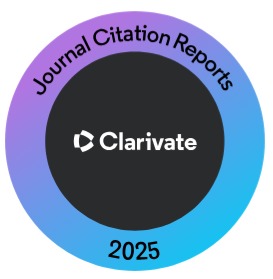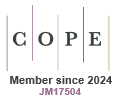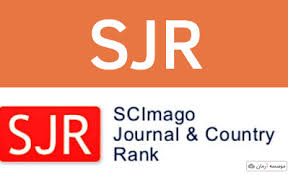Prevalence and Determinants of Intrauterine Contraceptive Device Uptake among Childbearing Age Women in Nigeria: A Cross-Sectional Study
Keywords:
contraception, contraceptive agents, family planning services, intrauterine devices, pregnancy, childbearing ageAbstract
OBJECTIVE: To investigate the prevalence and determinants of intrauterine contraceptive device (IUCD) uptake among childbearing-age women in Northern Nigeria.
METHODOLOGY: A cross-sectional study was employed among 278 childbearing-age women attending a family planning clinic at Wudil General Hospital in Kano State, Nigeria, from June to August 2022. A nonprobability purposive sampling technique was used to recruit participants. The study included women of childbearing age who were within the reproductive years (18 years and above), have conceived at least once, are still reproductive, and wish to delay future pregnancy for at least a year. The study excluded women with primary or secondary infertility who were confirmed pregnant at the study time and had possible cognitive impairment. Data was collected using a self-administered questionnaire. The data were analyzed by using SPSS software version 25.0.
RESULTS: The prevalence of IUCD uptake among participants was 23.0%. There were significant differences in IUCD uptake with the number of children and pregnancies, with women having five or more children being five times more likely to use an IUCD. The univariate logistic regression model test showed a significant association between IUCD uptake and the number of pregnancies but not with other factors, including perceived social support.
CONCLUSION: The uptake of IUCDs was significant among women who had five or more children. Involving substantial others like husbands, family members, and peers in the issue of IUCDs as a contraceptive method will still help promote the uptake even though perceived social support was found not to be significant.
References
Kurjak A, Stanojevi? M, Sen C, Chervenak F. Maternal mortality: Tragedy for developing countries and shame for developed world. Donald School J Ultrasound Obstet Gynecol. 2020; 14: 17–27.
Nigeria Demographic and Health Survey 2013 Preliminary Report, National Population Commission MEASURE DHS, ICF International. 2013.
The Sustainable Development Goals Extended Report 2024. 2024.
Piane GM. Maternal Mortality in Nigeria: A Literature Review. World Med Health Policy. 2019; 11: 83-94.
Otu A, Ukpeh I, Okuzu O, Yaya S. Leveraging mobile health applications to improve sexual and reproductive health services in Nigeria: implications for practice and policy. Reproductive Health. 2021; 18. Preprint at https://doi.org/10.1186/s12978-021-01069-z.
United Nations Department of Economic and Social Affairs. World Population Prospects 2024: Summary of Results. 2024. Available from: www.unpopulation.org.
Meh C, Thind A, Ryan B, Terry A. Levels and determinants of maternal mortality in northern and southern Nigeria. BMC Pregnancy Childbirth. 2019; 19.
Ingiabuna TE, Endurance U. Population and development in Nigeria: An assessment of the national policy on population and sustainable development. IJDMR. 2016; 80-102.
Nigeria Family Planning Blueprint (Scale-Up Plan) Federal Government of Nigeria Federal Ministry of Health. 2014.
Adedini SA, Favour L, Ntoimo C, Alake C, Ojei A. Sub-National Analysis of Contraceptive Discontinuation among Women in Nigeria: Evidence from the Demographic and Health Survey. 2023.
World Family Planning 2022 Meeting the Changing Needs for Family Planning: Contraceptive Use by Age and Method. 2022.
Abubakar IB, Abubakar HB. Nigerian women's modern contraceptive use: evidence from NDHS 2018. Reproduction Fertility. 2024; 5.
Daniele MAS, Cleland J, Benova L, Ali M. Provider and lay perspectives on intra-uterine contraception: A global review. Reprod Health. 2017; 14.
Kavanaugh ML, Jerman J, Finer LB. Changes in use of long-acting reversible contraceptive methods among U.S. Women, 2009-2012. Obstet Gynecol. 2015; 126: 917–927.
Nigeria Demographic and Health Survey 2023-24 Key Indicators. 2024.
The access to contraception around the world: Situational analysis and current challenges. 2024. Available from: https://focus2030.org/The-access-to-contraception-around-the-world-situational-analysis-and-current.
Uhuo E. Predictive factors to access and use of family planning services by rural and semi-urban dwellers in Afikpo North Local Government area, Ebonyi State, Nigeria. Afr J Reprod Health. 2020; 24: 132–137.
Hutchinson PL. Understanding family planning outcomes in northwestern Nigeria: analysis and modeling of social and behavior change factors. BMC Public Health. 2021; 21.
Mohammad AH, Sadat NA, Yim LS, Chinna K. Validity and reliability of the Hausa version of multidimensional scale of perceived social support index. Iran Red Crescent Med J. 2015; 17.
Mbuthia FW, Okumbe GM, Monda J, Ng’ang’a PM. Intrauterine device uptake among women seeking family planning services in Nairobi County, Kenya. Afr J Midwifery Womens Health. 2017; 11: 46–50.
Rodrigues IB, Adachi JD, Beattie KA, MacDermid J. C. Development and validation of a new tool to measure the facilitators, barriers and preferences to exercise in people with osteoporosis. BMC Musculoskelet Disord. 2017; 18.
Shelton JD, Finkle C. Leading with LARCs in Nigeria: The Stars Are Aligned to Expand Effective Family Planning Services Decisively. Global Health Sci Pract. 2016; 4.
Singal S. Understanding factors associated with continuation of intrauterine device use in Gujarat and Rajasthan, India: a cross-sectional household study. Sex Reprod Health Matters. 2022; 29: 1–16.
Amenu D, Wakjira T, Tadele A, Kebede A, Asefa Z. Why intrauterine device (IUD) utilization is low in southwestern Ethiopia. A mixed-method study. Acta Obstet Gynecol Scand. 2023; 102: 905–913.
Neukom J, Chilambwe J, Mkandawire J, Mbewe RK, Hubacher D. Dedicated providers of long-acting reversible contraception: New approach in Zambia. Contraception. 2011; 83: 447–452.
Mukherjee S, Swain D. Barriers and Acceptance of Intrauterine Contraceptive Devices (IUCD) Among Married Women of Reproductive Age in Odisha, India. Cureus. 2023; doi: 10.7759/cureus.40919.
Assefa KB. Magnitude and Factors Affecting Long-acting Reversible Contraceptive Utilization among Reproductive Age Women in Silti District, Southern Ethiopia. 2020; doi: 10.35248/2167-0420.20.9.494.
Najafi-Sharjabad F, Rahman HA, Hanafi Ah M, Zainiyah S, Yahya S. Spousal Communication on Family Planning and Perceived Social Support for Contraceptive Practices in a Sample of Malaysian Women. Iran J Nurs Midwif Res. 2014; 19.
Sarnak DO. The role of partner influence in contraceptive adoption, discontinuation, and switching in a nationally representative cohort of Ugandan women. PLoS One. 2021; 16.
Downloads
Published
How to Cite
Issue
Section
License
Copyright (c) 2025 Journal of Liaquat University of Medical & Health Sciences

This work is licensed under a Creative Commons Attribution-NonCommercial-ShareAlike 4.0 International License.
Submission of a manuscript to the journal implies that all authors have read and agreed to the content of the undertaking form or the Terms and Conditions.
When an article is accepted for publication, the author(s) retain the copyright and are required to grant the publisher the right of first publication and other non-exclusive publishing rights to JLUMHS.
Articles published in the Journal of Liaquat University of Medical & health sciences are open access articles under a Creative Commons Attribution-Noncommercial - Share Alike 4.0 License. This license permits use, distribution and reproduction in any medium; provided the original work is properly cited and initial publication in this journal. This is in accordance with the BOAI definition of open access. In addition to that users are allowed to remix, tweak and build upon the work non-commercially as long as appropriate credit is given and the new creations are licensed under the identical terms. Or, in certain cases it can be stated that all articles and content there in are published under creative commons license unless stated otherwise.























